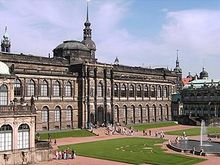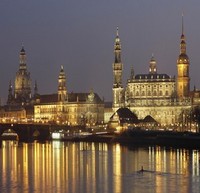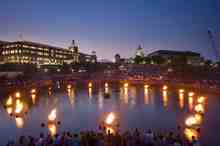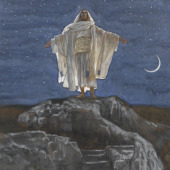Visiting upstate New York this weekend — way upstate — I spent a day in Buffalo, checking out two new must-see art attractions, the Burchfield Penney Art Center and the Darwin Martin House, Frank Lloyd Wright’s masterpiece and the subject of this post.
Even people who find Wright’s prairie house style not to their liking will appreciate the Martin
 House. Although it’s still being restored, and will be even more beautiful in about three years’ time, the restoration group that saved it essentially announced that the home was ready for prime time this spring, when they opened a $5 million visitors center designed by Toshiko Mori. With its floor-to-ceiling windows, long flat shape and an orientation parallel to the pergola Wright use to unify the Martin House complex, the center is a perfect complement to Wright’s design.
House. Although it’s still being restored, and will be even more beautiful in about three years’ time, the restoration group that saved it essentially announced that the home was ready for prime time this spring, when they opened a $5 million visitors center designed by Toshiko Mori. With its floor-to-ceiling windows, long flat shape and an orientation parallel to the pergola Wright use to unify the Martin House complex, the center is a perfect complement to Wright’s design.
Here’s the home’s background: Around the turn of the 20th century, Darwin D. Martin, an executive of the Larkin Soap Co. and one of the country’s best-executives, formed a friendship with Wright that led to several commissions, including the pioneering Larkin Soap Co. office building in Buffalo and the building of this domestic complex in 1903-05. It includes the home (front view, above; side view, below), a pergola linking it to the conservatory, stables, carriage house, a home for Martin’s sister and (off to the side) a
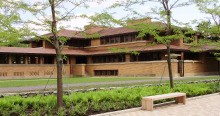 gardener’s home. When Martin died in the ’30s, his wife, who never liked the home because it was dark, moved to their summer place, Graycliff, also designed by Wright (and also open to the public, though I didn’t get there).
gardener’s home. When Martin died in the ’30s, his wife, who never liked the home because it was dark, moved to their summer place, Graycliff, also designed by Wright (and also open to the public, though I didn’t get there).
Unoccupied, the Martin home fell into disrepair and was vandalized. Later, it was purchased by a well-meaning owner (who nevertheless modernized the kitchen with yellow formica counters!) who developed money troubles. His predicament prompted him to sell the pergola/conservatory/carriage house, which were demolished and replaced with apartment buildings.
[Read more…] about Wright’s Darwin Martin House Becomes A Must-See

